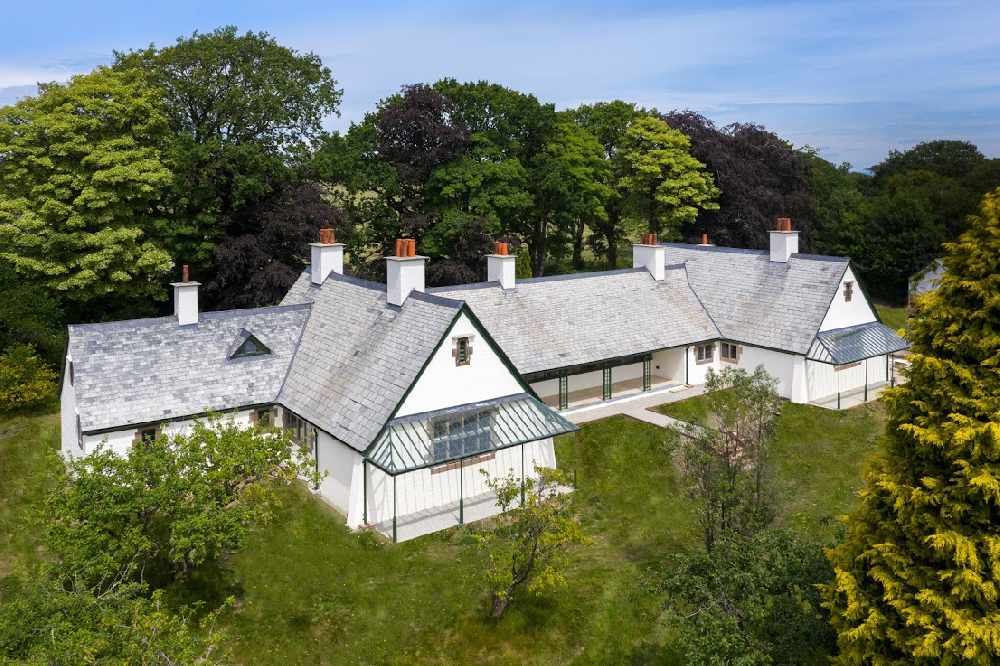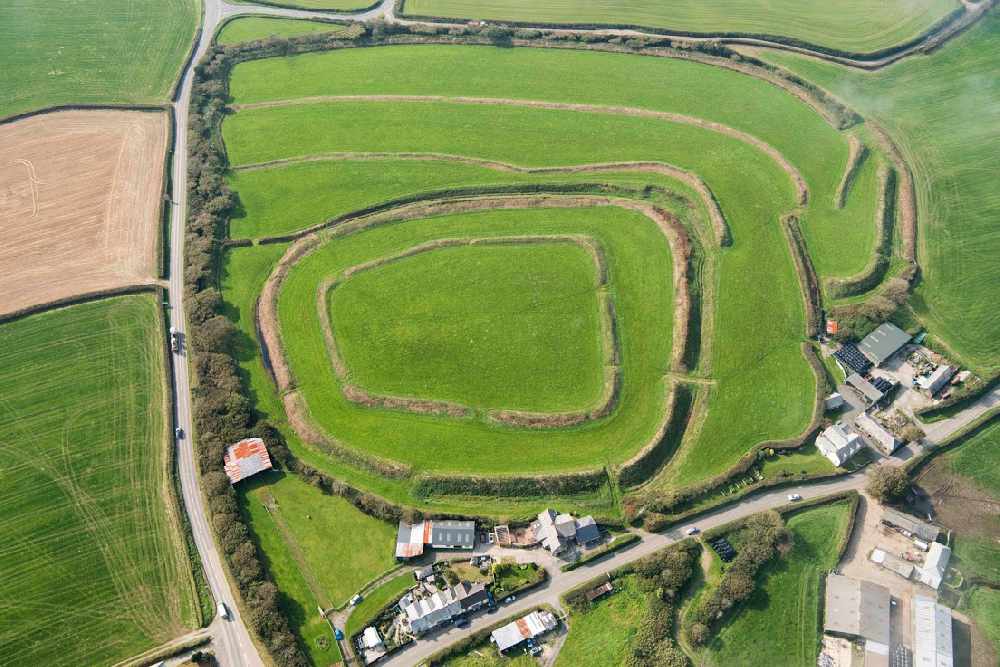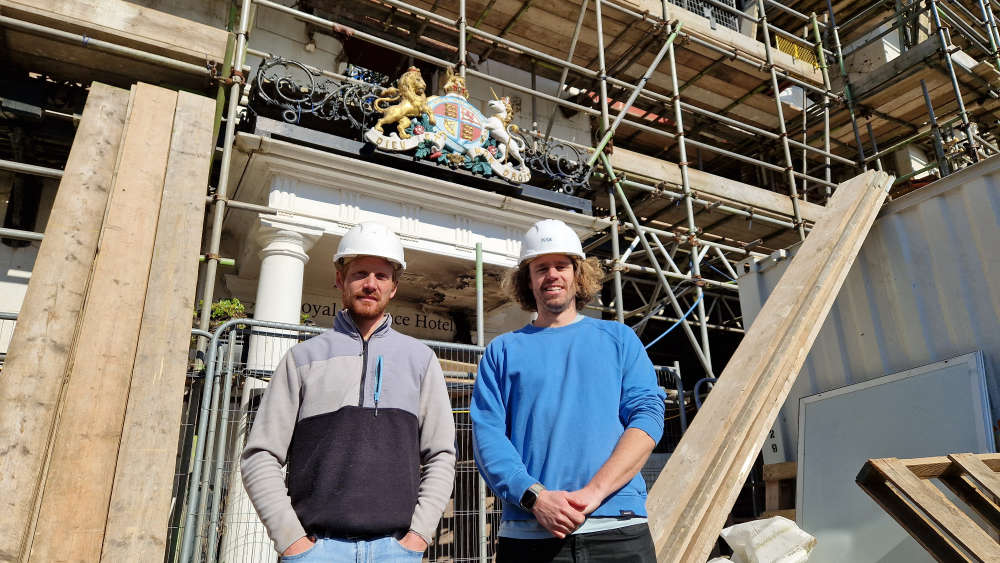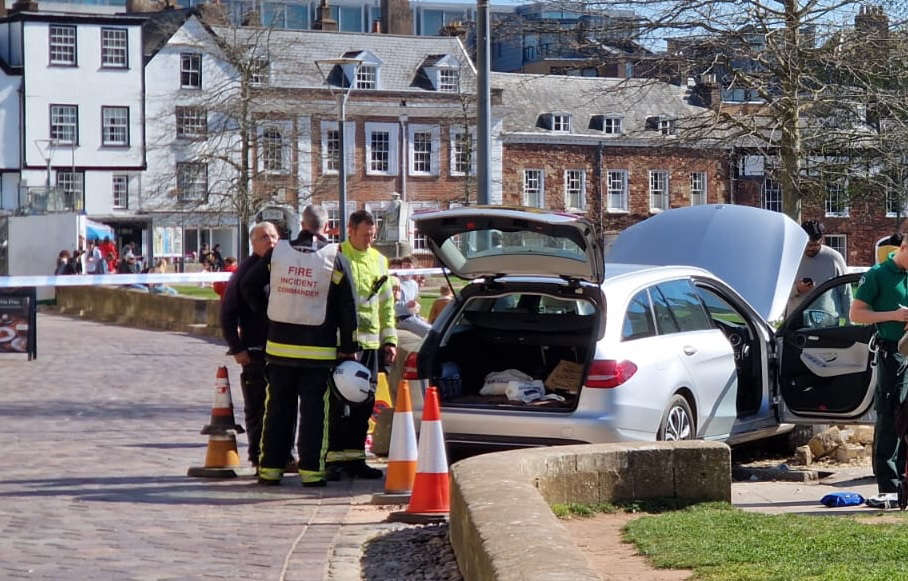
But 53 saved in last year
Historic England has revealed the historic sites most at risk of being lost forever as a result of neglect, decay or inappropriate development.
Fifty-three in the south west have been saved thanks to local communities, charities, owners, local councils and Historic England. They include the stunning hillforts at South Cadbury and Clovelly Dykes, now cleared of damaging vegetation; Plymouth’s Elizabethan House, repaired for the Mayflower’s 400th anniversary, and a beautiful arts and crafts hospital at Winsford, Devon, part of which is still used for healthcare. But 71 sites in the region have been added to the register.
Rebecca Barrett, Historic England’s Regional Director in the South West said: “In challenging times such as these, heritage can provide a sense of continuity and bring us solace. We also know that investing in historic places can help boost our economic recovery. The 53 places rescued from the register this year show us that real progress is being made – sites lovingly rescued and brought back into use as new homes, businesses and community spaces. But there is still a long way to go and many more historic buildings and places which need the right care and attention, funding, partnerships and community support to give them a brighter future.”
SAVED: Clovelly Dykes, North Devon
Clovelly Dykes is one of the most impressive hill forts in Devon. Unusually it does not sit on top of a hill, but instead commands an important strategic position on a plateau overlooking Bideford Bay. It is a large and complex Iron Age hill fort. Its deep ditches and steep ramparts are challenging to manage and as a result, it has been on the 'at risk' register for many years due to the impact of damaging vegetation, scrub, trees and bracken.
Historic England awarded the North Devon Coast Area of Outstanding Natural Beauty a grant for a Monuments Management Scheme, a partnership project to improve the condition of the monument and increase public engagement, enjoyment and involvement.
The project brought together specialist contractors and a volunteer task force to remove the scrub and bracken, reducing the risk to buried archaeology. It also uncovered new information - research by the North Devon Archaeological Society and new drone and geophysical surveys confirmed an extraordinary level of archaeological information at the site, underlining its importance to our understanding of life in Iron Age Britain.

Clovelly Dykes (courtesy: Historic England)
SAVED: Winsford Hospital, near Beaworthy
This was built as a cottage hospital in 1899, designed by the brilliant arts and crafts architect, Charles Voysey, and founded by a local philanthropist, Maria Medley. Winsford Cottage Hospital remained in medical use until 1998, when a local group – the Winsford Trust - was set up to acquire and run the building for the local community. The trust soon faced an insurmountable maintenance burden, and the building needed a new use. In 2012 a Historic England grant led to the production of a Conservation Management Plan, options appraisal and costed condition survey.
The Winsford Trust asked buildings preservation charity the Landmark Trust, who took on the site in 2018 which restored the building and sensitively transformed it into inspiring self-catering holiday accommodation for up to six guests. In addition to the accommodation there remains a mixed-use community wing available for private hire, particularly aimed at freelance health and wellbeing practitioners - so continuing the tradition of healthcare in the building for over 120 years.
SAVED: Chambered cairn, 830 metres south of Buttern, Gidleigh, West Devon
This impressive Neolithic chambered cairn had become completely overgrown with bracken. Not only was the cairn invisible for most of the summer, the bracken rhizomes were damaging the archaeological deposits buried within. As a result, volunteers from the Sticklepath and Okehampton Conservation Group (StOC) were called in by Historic England to clear the site.
Through the Historic England funded ‘adopt a monument’ scheme, many of the volunteers had been trained to use petrol strimmers, which proved an excellent tool in cutting the bracken. The group, along with help from the local Dartmoor National Park Ranger and members of the local community, have spent two seasons clearing the cairn. The results have been dramatic with the bracken so reduced that the chamber cairn is now visible in summer. The volunteers will continue clearing until the cairn is completely clear of bracken. This monument is one of a number in the local area that have been removed from ‘at risk’ status due to the hard work and dedication of the group’s volunteers.
SAVED: Elizabethan House, Plymouth
The Elizabethan House, in New Street on the Plymouth Barbican was built in the 1590s as part of the expansion of the city around Sutton harbour. The house was initially owned by various local dignitaries but later occupied as lodgings by merchants and sea-farers. As the city continued to expand, the area declined and 32 New Street became an overcrowded tenement, with 58 recorded inhabitants in 1891.
After the First World War the area was ear-marked for demolition under a slum clearance scheme. The Elizabethan House was saved from demolition by a number of supporters of the Old Town, and its repair became the first work of the ‘Old Plymouth Fund’, making the building notable as an early example of ‘conservation in action’ in Plymouth. Repairs began in 1929 and the house re-opened as a museum the following year.
Almost 90 years later, some of those repairs had come to the end of their life, and some further issues had come to light, and the building was added to Historic England’s Heritage at Risk Register.
Historic England grant funded initial investigations to determine the causes of decay and the repairs that were required, and has also given a grant to repair the garden walls. Extensive works, further research on the history of the house and improved visitor facilities are being carried out with support from Plymouth City Council, Mayflower 400, National Lottery Heritage Fund, Coastal Revival Fund, and The Pilgrim Trust.
GOOD PROGRESS: Stover Park, near Newton Abbot
Stover is a Grade II registered park and garden, and was placed on the Heritage at Risk register in 2009.
Devon County Council own Stover Country Park, the northern third of Stover, which is open to the public. Through their 'Restoring Stover Park Project', they have secured funding from the National Lottery Heritage Fund to enable greater access and promote public appreciation of this popular and valuable piece of Devon’s heritage.
The project will be a major step forward in reducing the vulnerability and risk to the park, and helping to take it off the At Risk Register. Work is underway and a grant of £30,000 from Historic England is supporting the technical surveys of the former Stables, ornamental lake and the Granite Lodge.
 Fun park shuts two months after opening
Fun park shuts two months after opening
 Work begins on project to rebuild fire-hit Exeter landmark
Work begins on project to rebuild fire-hit Exeter landmark
 Car crashes through wall near Exeter Cathedral
Car crashes through wall near Exeter Cathedral
 Plymouth community group scoops national award
Plymouth community group scoops national award
 Naming streets after famous people could be over in parts of Devon
Naming streets after famous people could be over in parts of Devon
